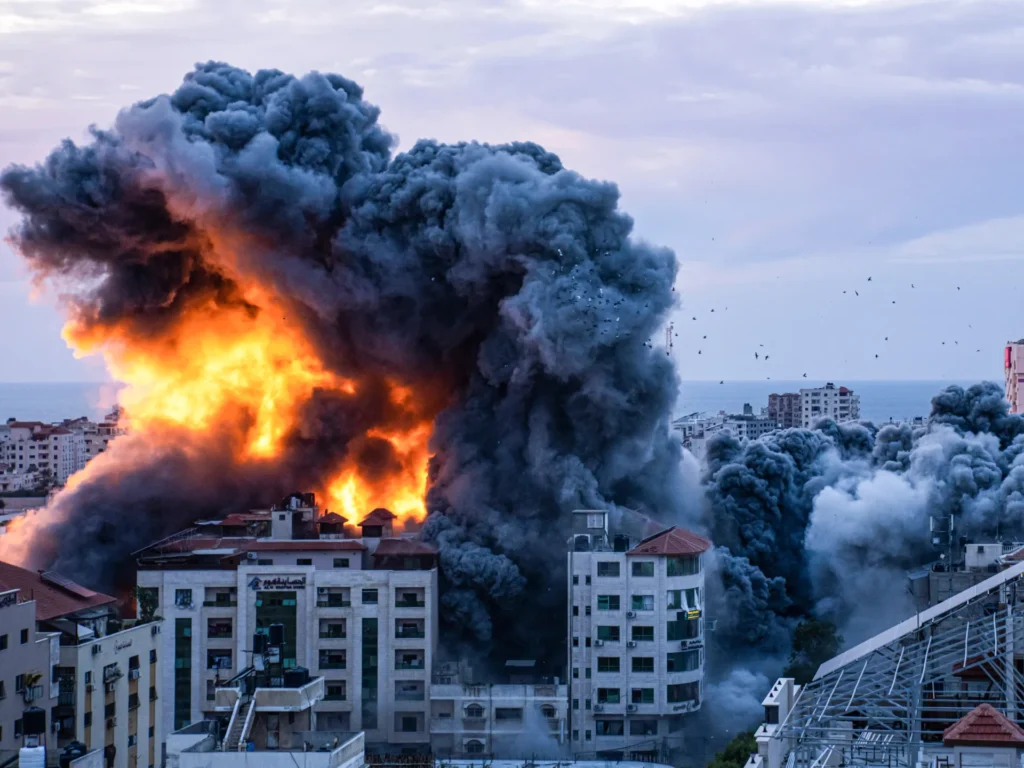Understanding the Recent Escalation in Gaza
The conflict in Gaza has once again reached a boiling point, drawing international attention to the ongoing tensions between Israeli forces and Palestinian groups. As violence flares up, the humanitarian toll increases, with casualties on both sides and a pressing need for peace initiatives. This article delves into the recent developments, the context of the conflict, and what the future may hold.
Background of the Gaza Conflict
The Israeli-Palestinian conflict is one of the world’s longest-standing geopolitical disputes. At its core, the conflict centers around territorial claims and the right to self-determination for Palestinians, intertwined with Israel’s quest for security and recognition.
Historical Context
- 1948 Arab-Israeli War: The creation of the state of Israel led to displacement and tensions, laying the groundwork for ongoing struggles.
- Six-Day War in 1967: Israel captured Gaza, the West Bank, and East Jerusalem, intensifying sovereignty debates.
- The Oslo Accords: This was a significant step towards peace, granting the Palestinian Authority limited self-governance in parts of the West Bank and Gaza.
- 2005 Israeli Disengagement: Israel unilaterally withdrew from Gaza, yet tensions have remained due to blockades and settlement disputes.
Recent Developments in the Gaza Conflict
As of late, the situation in Gaza has escalated significantly, leading to a surge in **military actions** and **civilian impact**. Understanding the specific triggers of the latest wave of conflict is crucial.
Causes of the Latest Escalation
- Provocative Acts: A series of skirmishes and provocations, including rocket launches and military responses.
- Political Tensions: Internally within Israeli and Palestinian politics, contributing to the urgency or delay of peace efforts.
- External Influences: Geopolitical shifts affecting regional alliances and international support.
Military and Civilian Impact
The escalation has severe implications for both military personnel and civilians, exacerbating the humanitarian crisis in the region.
- Israeli Forces: Reports indicate a rise in **soldier casualties**, highlighting the conflict’s intensity.
- Palestinian Casualties: **Civilian casualties** in Gaza are increasing, underscoring the human cost of the ongoing violence.
- Infrastructure Damage: Key infrastructures, including hospitals and schools, have been damaged or destroyed, impairing essential services.
Humanitarian Efforts and Challenges
The humanitarian response in Gaza is critical, with numerous organizations striving to provide relief amid challenging conditions.
Major Humanitarian Organizations Involved
Several international and local NGOs are at the forefront of providing aid, supplying essentials such as food, water, and medical assistance.
- United Nations Relief and Works Agency (UNRWA): Plays a pivotal role in supporting Palestinian refugees.
- International Red Cross: Provides medical assistance and emergency relief efforts on the ground.
- Medicins Sans Frontieres (MSF): Offers crucial medical care in conflict-affected areas of Gaza.
Barriers to Aid
Despite the urgent need for assistance, several factors impede humanitarian efforts.
- Access and Security Issues: Blockades and ongoing violence hinder the delivery of goods and services.
- Funding Constraints: Limited financial resources restrict the scalability of aid efforts.
- Political Influence: External political agendas often impact the allocation and effectiveness of humanitarian aid.
The Global Response to the Gaza Conflict
International reactions to the conflict have varied, with responses ranging from calls for ceasefires to rallying for deeper political engagements.
Diplomatic Efforts
Global leaders and organizations urge restraint and promote negotiations as a means to de-escalate tensions.
- United Nations: The UN remains actively involved in facilitating peace talks and ceasefire agreements.
- U.S. Involvement: The U.S. has historically played a mediating role, though recent shifts in policy have altered its stance and effectiveness.
- Regional Alliances: Neighboring countries and regional coalitions are pursuing diplomatic solutions tailored to their strategic interests.
What the Future Holds
The path to lasting peace in Gaza is fraught with challenges but remains a focal point for both local and international stakeholders.
- Peace Negotiations: Continued diplomatic engagement is essential to forge a viable two-state solution.
- Reconstruction and Development: Restoring infrastructure and addressing development needs are crucial post-conflict priorities.
- International Commitment: Sustained global commitment is vital to ensure effective and lasting resolutions.
Conclusion
The escalation of conflict in Gaza underscores the pressing need for a comprehensive and sustained effort towards peace. While the road ahead is daunting, the international community’s resolve could pave the way towards stability. Addressing the root causes of the conflict and providing unwavering support for humanitarian and peace-building initiatives remain essential steps for a future of co-existence and prosperity for all involved.

